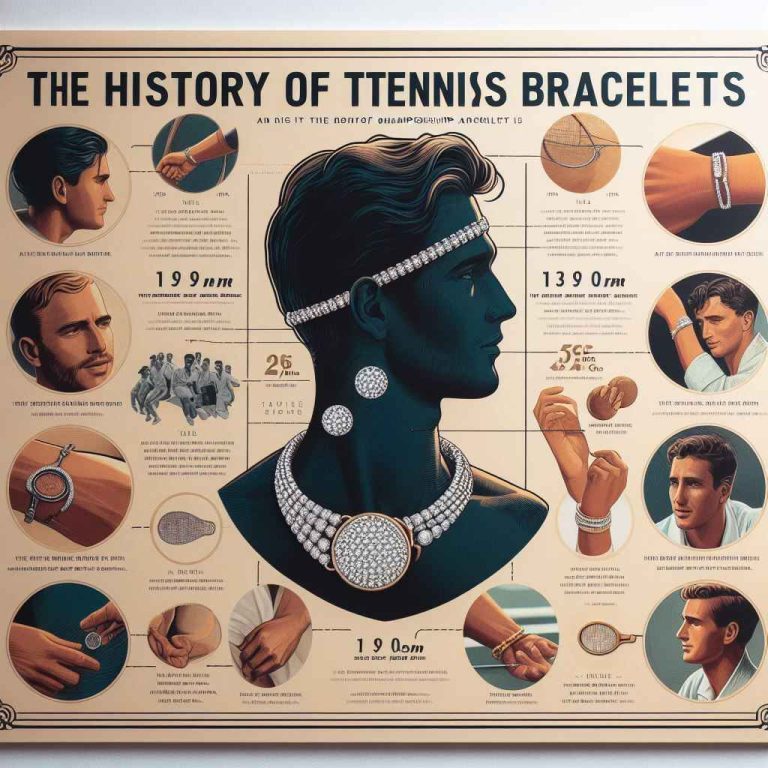What Does Gold Plated Mean: Gold Filled vs. Gold Plated
What is Gold Plated Jewelry?
Gold jewelry is beautiful and elegant.
This noble metal has been loved throughout history by our ancestors.
It’s majestic shine and allure are some of the reasons that make this metal so captivating.
Immediately elevate your entire look with an elegant gold chain or a pair of gold hoop earrings.
However, here’s the problem: Pure gold is very expensive.
The simple solution? Gold-plated jewelry!
Gold plated jewelry has the luxury, shine and magnificence of solid gold jewelry, but without the exorbitant price tag.

WHAT DOES GOLD PLATED MEAN?
A gold plated jewelry is a piece of jewelry that is made from a certain metal or alloy other than gold, and covered in a layer of gold
A bracelet in which the base metal is copper is covered in a layer of gold, resulting in a gold-plated bracelet.
WHAT IS PLATING?
Plating refers to the process in which a piece of jewelry (non-gold) undergoes a certain process that allows it to be covered in a layer of gold.
THE GOLD ELECTRONIC PLATING PROCESS
The gold plating process is also sometimes referred to as electroplating.
Items are plated with a layer of gold on the surface over another metal or alloy.
Let’s look at the step by step process:
- Surface Cleaning: The surface must be spotless, free of oils, dirt, grime and any other residue. A clean surface guarantees improved adherence. Ultrasonic cleaning or steaming will usually take place.
- Rinse: The jewelry is thoroughly rinsed to remove any cleaning agent that is still left on the piece.
- Buffer Layer: A buffer layer is added to the base metal. This will improve the bond between the underlying metal and the gold.
- Base Coat: A base coat is applied. The base coat used is often nickel or copper
- Final Coat: With the careful control of temperature, time, and voltage, the piece is submerged into a special plating solution to attract gold ions.
- Rinse: The piece is given one good final rinse.
- Drying: Pieces are hung to dry.
Steps 1-7 are repeated if necessary.
HOW THICK SHOULD GOLD PLATING BE?
The thickness of the gold plated layer varies.
The Federal Trade Commission (FTC) puts a label on plated items to ensure classifications are accurately and honestly conveyed to consumers.
- Heavy gold-plated: 2.5 microns
- Gold-plated: 0.5 microns
- Gold-electroplate: 0.175 microns
- Gold-wash: Less than 0.175 microns
The plating thickness is adjusted by the duration the jewelry is submerged into the electro-plating solution.

Examples of Gold Plated Jewelry

Mirielle Gold Trilogy Hoops
Gold Plated vs. Gold Filled Jewelry
GOLD-PLATED
As discussed, gold plated jewelry is laced with a layer of gold. The thickness of the gold depends on what type of gold electroplating you are going for.
GOLD-FILLED
Gold filled jewelry is created by pressure bonding a layer of gold to another metal. The gold in gold-filled jewelry is often thicker than the gold in gold-plated jewelry.
Is Gold Plated Jewelry Worth It?
So, here comes the question you’ve been dying to know.
Is gold plated jewelry worth my money? Is it real or fake?
The answer depends.
IS GOLD PLATED JEWELRY REAL GOLD?
The surface layer of gold-plated jewelry is real gold.
This gold layer has varying degrees of fineness, from 10K to 24K.
However, the base metal itself is not gold.
IS GOLD PLATED JEWELRY FAKE GOLD?
The base piece is not made of gold, but another metal or metal alloy.
When buying gold-plated jewelry, keep in mind that the centre is not gold, only the surface is.
HOW DO I KNOW IF MY JEWELRY IS GOLD PLATED?
There are several ways to test whether your jewelry is gold-plated or not.
I. MAGNETIC TEST
Gold is a non-ferrous metal, which means it is not magnetic.
Try sticking a magnet close to your testing piece.
If it is magnetic, there’s a chance you are getting a reaction from the base metal which is ferrous.
Although the magnetic test is not definitive, it’ll give you a clearer glimpse towards your jewelry piece.
II. ACID TEST
The most reliable test to determine the gold content in your jewelry is through an acid test.
Apply acid onto a sample piece of your jewelry and watch for a colour change.
The change in colour on your jewelry piece will determine what kind of metals the sample contains.
Why Should I Buy Plated Jewelry? Pros of Gold Plated Jewelry
There are many reasons why gold-plated pieces are preferred over solid gold pieces.
Plating is done to enhance the look and wearability of the jewelry, without the crazy price tag.
Let’s take a look at a few other reasons you should consider some gold plated jewelry:
- Affordable: Gold-plated jewelry is the most affordable type of gold jewelry over solid gold and gold-filled pieces.
- Identical to Sold Gold: To the untrained eye, gold-plated pieces often look just like real gold. Even to the trained eye, tests need to be done to determine the gold content.
- Strong and Durable: Gold-plated jewelry is an excellent option for everyday wear because they are stronger and more durable than gold. Gold is a malleable metal and therefore solid gold is much softer than a gold plated piece.

Downsides of Gold Plated Jewelry
- Tarnish: Tarnish is a natural chemical reaction that occurs gradually over time with the exposure to air and moisture. Accumulation of tarnish on the gold jewelry will cause it to lose its original brightness and shine.
- Lower Value Than Solid Gold and Gold-Filled Pieces: Because the surface layer of gold on plated jewelry is so thin, it has a much lower value than other types of pieces.
Is Gold Hypoallergenic?
Gold is a hypoallergenic metal, meaning it does not cause any reactions.
Hypoallergenic means “below average” or ”slightly” allergenic.
Wearing jewelry labeled “hypoallergenic” means that it is less likely to cause a reaction since little to no potentially-irritating alloys are used to create the earring.
While pure gold is indeed a hypoallergenic material, its pure form is not used in the making of jewelry because it is too soft.
For the alloy to take shape, a percentage of the composition is made up of other metals.
Keep in mind, any metal can be added into the structure.
14K, 18K, 22K designations for gold are introduced:
- 14K: 14 parts gold and remaining 10 parts other materials
- 18K: 18 parts gold and remaining 6 parts other materials
- 22K: 22 parts gold and remaining 2 parts other materials
The higher the amount of gold in the composition of the alloy, the less likely there is a chance of allergies and irritation.
But, what about gold-plated jewelry? Are they hypoallergenic?
As aforementioned, gold-plated jewelry is made up of a base metal that is non-gold.
Once the gold surface layer chips off, you may be exposed to the base material.
If you have a metal allergy to the base material, you could get an adverse reaction from it.
Important Gold Jewelry Terms You Should Know
SOLID GOLD
Solid gold, also known as pure gold, contains 99.9% gold.
The remaining is from impurities found in the metal.
Solid gold is highly malleable and since it is too soft to use in jewelry, other metals are introduced into the composition to give it strength and durability.
GOLD FILLED
Gold filled jewelry is created by pressure bonding a layer of gold to another metal. The gold in gold-filled jewelry is often thicker than the gold in gold-plated jewelry.
GOLD VERMEIL
Gold vermeil is a very specific type of gold plating that includes varying degrees of gold fineness (from 10K to 24K) on a sterling silver base.
Want to know if your jewelry is a gold vermeil piece?
See if it checks off all these boxes.
- Sterling silver base metal
- Gold fineness of 10K to 24K
- Coated at 2.5 microns thick
To be legally classified as gold vermeil, the jewelry needs to satisfy all 3 conditions above.
GOLD OVER STERLING SILVER
If it satisfies the 3 conditions above, it is legally considered to be gold vermeil.
However, it is common (but incorrect), for people to call any gold coated piece of sterling silver jewelry “gold vermeil”.
If your sterling silver jewelry is plated with gold, but it doesn’t meet all 3 classifications above, it is considered plainly just gold over sterling silver, and not gold vermeil.
WHAT IS 9K GOLD?
To add workability to the gold piece, other metal needs to be added to the gold alloy.
9K gold is made up of 9 parts gold and remaining 15 parts other materials.
That means 37.5% of the piece is real gold.
WHAT IS 12K GOLD?
12K gold is made up of 12 parts gold and remaining 12 parts other materials.
That means 50% of the piece is real gold.
WHAT IS 14K GOLD?
14K gold is made up of 14 parts gold and remaining 10 parts other materials.
That means 58.3% of the piece is real gold.
WHAT IS 18K GOLD?
18K gold is made up of 18 parts gold and remaining 6 parts other materials.
That means 737.5% of the piece is real gold.
WHAT IS 22K GOLD?
22K gold is made up of 22 parts gold and remaining 2 parts other materials.
That means 91.6% of the piece is real gold.
WHAT IS 24K GOLD?
24K gold is another name for solid pure gold.
Now that you’re familiar with gold, gold designations, and different gold layering techniques, are you ready to take a look at our affordable everyday jewelry?






